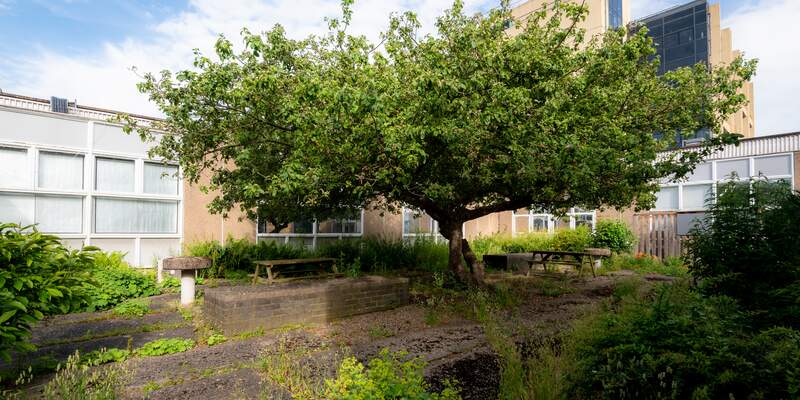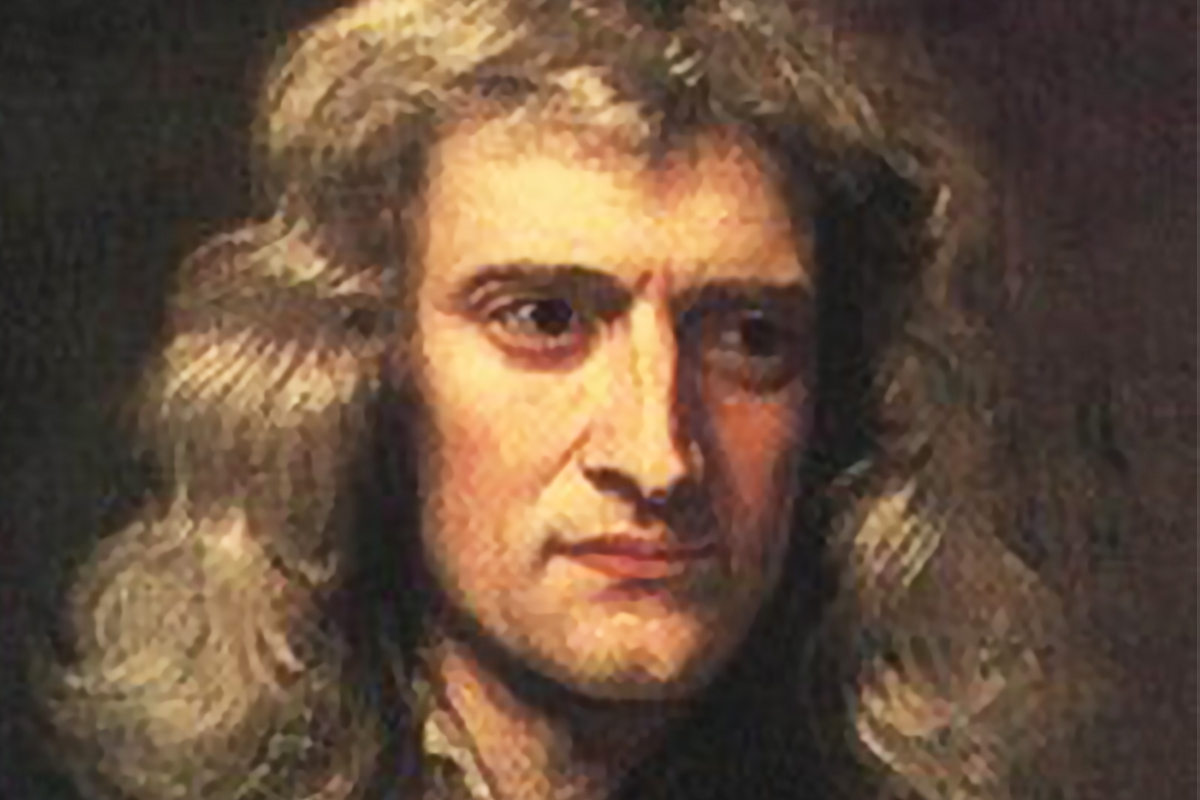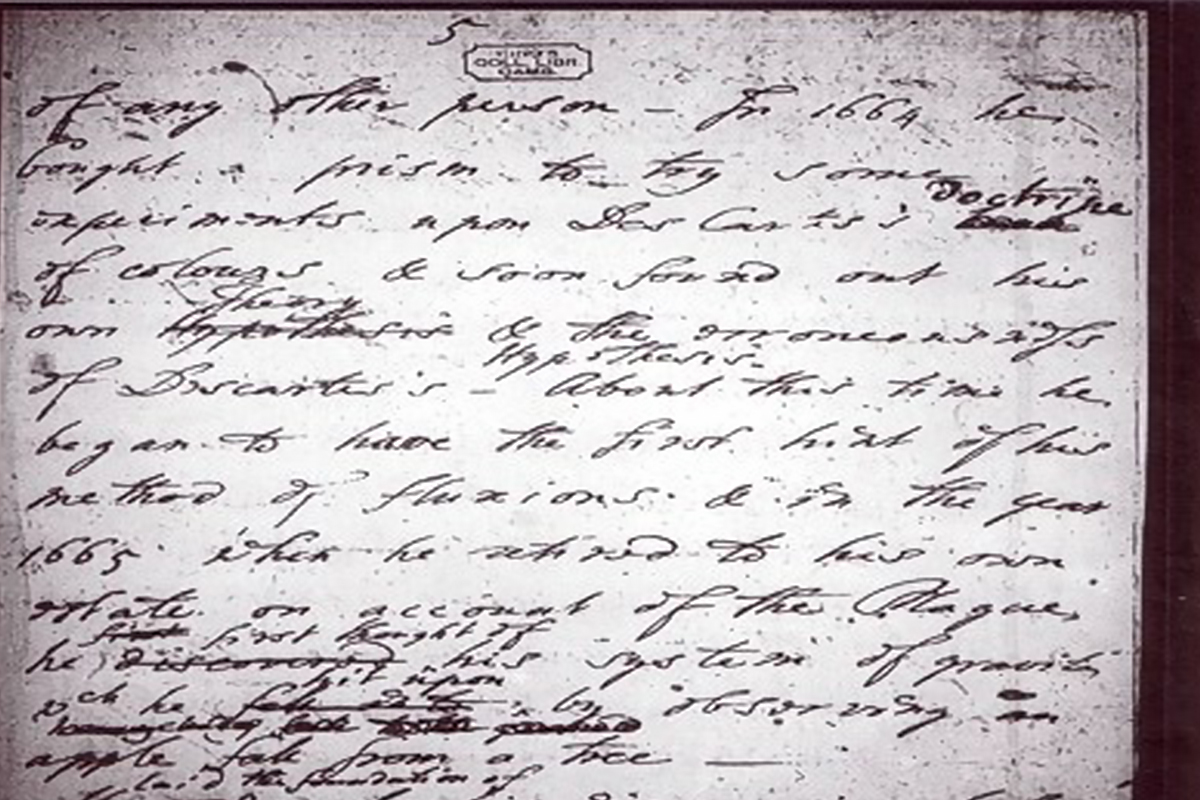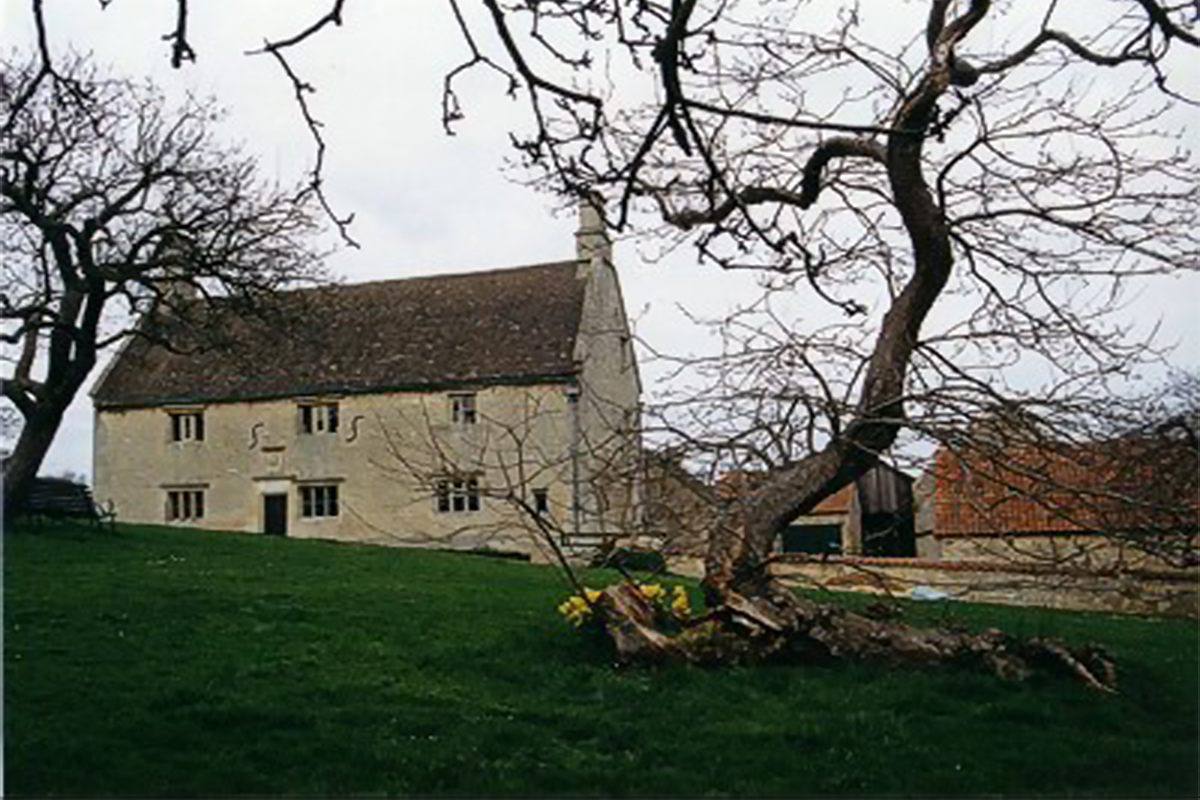
Isaac Newton's apple tree
Edmund Turnor's brother, Rev. Charles Turnor, drew the accompanying picture of the tree in 1820 showing its position with respect to the manor house.
Although Newton did not specify which tree he observed the apple fall from, there was only one tree growing in Newton’s garden. This is first noted by Sir David Brewster when he visited the house in 1830, mentioned in an account given by George Forbes (Professor of Physics, University of Glasgow).
Generations of the Woolerton family cared for the tree; they were tenant farmers and lived in the house from 1733 to 1947. Sadly, in 1816 despite their best efforts, the tree was blown down in a storm. Some branches were removed but a large portion of the tree was left and re-rooted. Surprisingly, this tree is still growing at Woolsthorpe Manor today and now is over 350 years old.
Our tree at the University of York remains rooted in the present day, but it serves as a reminder that questioning the conventional can lead to extraordinary discoveries. Our apple tree is a slice of history, but Isaac Newton's thinking resonates to this day.




